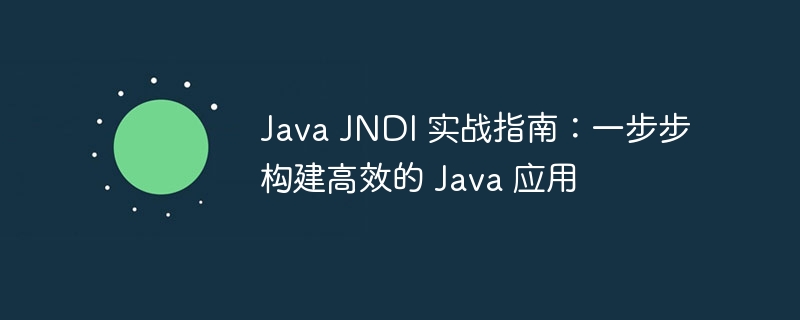

Java JNDI Practical Guide is a practical guide that comprehensively introduces how to build efficient Java applications. Through detailed steps and cases, this book helps readers quickly master Java Naming and Directory Interface (JNDI) technology and improve application efficiency and performance. Both beginners and experienced developers can benefit from it. This guide aims to provide readers with an in-depth understanding of JNDI technology and master the key techniques for building efficient Java applications through practical methods.
The core concepts of JNDI are namespaces and contexts. A namespace is a set containing a set of names, each name corresponding to a resource. A context is a location in a namespace that can contain names and resources. A context can contain subcontexts, forming a hierarchy.
JNDI provides two types of context: InitialContext and DirectoryContext. InitialContext is the most commonly used context by Java programmers. It can be used to access the namespace where the Java program resides. DirectoryContext is a higher-level context that can be used to access more complex namespaces, such as LDAP servers.
To use JNDI, Java programmers need to first create an InitialContext object. You can then use the InitialContext object to find the resource. To find a resource, Java programmers need to provide the name of the resource. The name of the resource can be an absolute path or a relative path.
For example, to find a data source named "DataSource", you can use the following code:
InitialContext ctx = new InitialContext();
DataSource ds = (DataSource) ctx.lookup("DataSource");The above code first creates an InitialContext object. Then, use the InitialContext object to find the data source named "DataSource". If the data source exists, it is stored in the ds variable.
JNDI provides many advantages, including:
JNDI also has some disadvantages, including:
Java JNDI is a Java API for accessing various naming and directory services. It allows Java programmers to easily find and use various resources such as data sources, mail servers, and printers. JNDI simplifies the life of Java programmers by providing a unified interface to access different naming and directory services.
The above is the detailed content of Java JNDI Practical Guide: Building Efficient Java Applications Step by Step. For more information, please follow other related articles on the PHP Chinese website!
